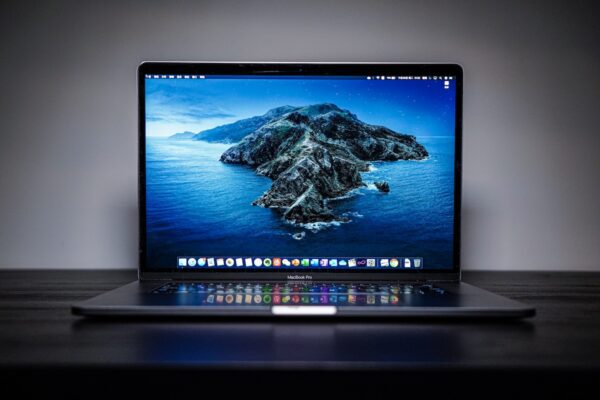What to Do When Your Macbook Air Doesn’t Charge When Plugged In

Estimated reading time: 7 minutes
Table of contents
Getting your MacBook Air to charge when plugged in can be a real hassle, but there are a few things you can do to make the process a little easier.
Depending on what is wrong, there are several different solutions to fixing MacBook Air for not charging when plugged in. You may want to try these suggestions:
Reset The System Management Controller (SMC)
Performing a System Management Controller reset can help fix many problems that you may experience with your Mac.
It may fix charging issues, battery problems, and other power-related issues. Using a reset on your Mac can also speed up your Mac’s performance.
Resetting the SMC can be a quick and easy process. This procedure is applicable to all Macs, but it is different for older MacBooks with a removable battery.
It can also fix keyboard backlights, power issues, and other problems. This is a very easy process, and you’ll be able to get your Mac back to normal after you follow these steps.
You’ll have to take a few minutes to wait before the Mac can run again, but it’s well worth the effort. After resetting the SMC, your Mac should run better than ever.
Resets on older MacBooks involve removing the battery and then reconnecting the power cord. This process isn’t necessary for newer MacBooks, but you can’t completely unplug your MacBook from the power source.
Resetting Macs With T2 Chip
Resetting the SMC on a desktop Mac with a T2 chip requires a few extra steps. First, you’ll need to shut down your Mac. You’ll need to wait at least 5 seconds before turning on the Mac. Then, you’ll need to wait another 15 seconds before plugging it back in.
Resetting Intel-Based Macs
Resets on Intel-based Macs are a little different. Performing an SMC reset requires you to press and hold the Control, Shift, Option, and Power buttons for four seconds. This is done to free the processor from rudimentary hardware functions.
Check The Power Outlet
Whether your MacBook Air or any other Apple laptop has a removable battery or is powered by an AC adapter, it’s always a good idea to check if the power outlet is ok.
If you’re plugged in but don’t see the charge icon, it’s a sign that your charger may be malfunctioning.
SEE ALSO: SEE ALSO: The 13 Best Macbook Accessories
Check Battery Status
When it comes to the battery, you can usually check its status in the system preference menu. The battery pane is located in the bottom row. It displays the battery’s capacity and the charging status.
The battery is the main component of your laptop. It can get worn out with use. It is also prone to damage from liquids. If the battery is in good shape, you can probably reinstall it. If the battery isn’t functioning, it’s probably time for a replacement.
Check Adapter And Plug-In Port
Another possible reason that your MacBook won’t charge is if the adapter is defective. You can try to get a replacement at the Apple Store or contact the company directly. Your MacBook’s plug-in port can also become dirty.
Clean The Type-C Charging Cable and Ports
Keeping the type-c charging cable clean is important for MacBook Air users.
It helps prevent the port from getting clogged with debris and causing charging issues. In addition, it can help prevent a port from getting too hot.
A dirty charging port can also lead to a loose connection and a connection error. This can also result in a battery that won’t charge. You can clean it up. There are several ways to do this.
Air Canister
The first method involves using a compressed air canister. Use a thin nozzle and spray the port, making sure to aim at the appropriate angle.
Plastic Flosser
Cleaning the port will also remove a little dust and lint from it. A plastic flosser can also be used to remove larger debris. Similarly, a toothpick can be used to slough off some of the smallest particles.
Brush
Another way to clean the port is to use a brush. You can purchase one online or at a hardware store. You can use a soft brush or even a cotton bud to get the job done. You can also use a toothpick to gently push the lint out of the port.
You can also try cleaning the port with an antistatic brush. This can be a bit trickier than a toothbrush, so be sure to read the instructions carefully.
Plastic Dental Pick
Alternatively, you can simply buy a plastic dental pick and slough off any lint and dirt that may be on the port. This is a simple way to clean the port.
If all else fails, you can contact Apple and have it inspected. The company’s support team can help you schedule an inspection and repair. However, you might void your warranty if you do this.
SEE ALSO: M1 or M2 Macbook Air: Which Is the Best Option for You?
Check If The Battery Is At The End Of Its Useful Life
There are many signs that your battery is nearing its end of life.
If you notice that the battery is taking longer to charge, or that it has a battery/charging warning light, you should consider replacing it. If you aren’t sure how to do it, contact a technician to help you out.
The battery’s capacity is the leading indicator of its health. If your battery has less than 80 percent of its rated capacity, it’s likely that it’s nearing its end of life.
The best way to check if the battery on your MacBook Air is at the end of its useful life is to use an Apple diagnostic tool. You can access this tool by going to the Apple menu > About This Mac > System Report.
Once you are in the System Report, look for the Battery section and select it. Here, you will be able to view information about the health of your battery. If the cycle count is particularly high or if the condition reads “Service Battery” then it is time to replace your battery as its useful life has come to an end.
You can also use third-party software to check on the condition of your MacBook Air batteries. This software will provide you with more information about the specific health of your battery. If the software reads that it needs to be replaced, then it is recommended that you do so as soon as possible.
Macbook Recall Program
Whether you have an older MacBook Air or a newer model, you may want to check if your MacBook is part of a safety or recall program.
These programs may allow you to replace your battery, logic board or other parts free of charge.
The best way to check is to visit the Apple website and find out if your device is eligible for one of the service programs. The first thing you need to do is to enter your serial number.
The information on the site will tell you if you are eligible for the program and what you need to do next.
If you need to check if your laptop is a part of a recall, there is no need to panic. The company has been issuing recalls for many different models over the years.
If you aren’t sure whether your device is part of a recall, you should contact Apple Support. They can arrange mail-in service or explain the different options available.
The customer service representative will also be able to give you an estimate of how long it will take to repair your machine.
Takeaway
If your MacBook Air isn’t charging when plugged in, it can be an issue related to the power adapter, battery, or laptop itself. To troubleshoot the issue, make sure you have a compatible power adapter and check that all connections are secure.
You should also try resetting the SMC or PRAM/NVRAM on your device. If the issue persists, you may need to book a repair with Apple or an authorized service provider for further diagnosis and repair. Once the source of the problem is identified and fixed, your MacBook Air should charge normally when plugged in.








